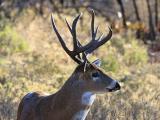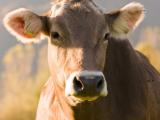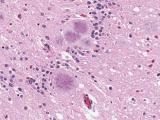Jun 6, 2003 (CIDRAP News) Five bulls having possible links to the Canadian cow that had mad cow disease were shipped into the United States, but it is unlikely that any of the bulls were infected with the disease, US officials said this week.
Canadian officials told the US Department of Agriculture (USDA) Jun 3 that five bulls from one of the herds that might have been the original home of the Canadian cow were sold to a farm in Montana in April 1997, USDA officials said in a report published yesterday.
US officials are trying to trace the fate of the five bulls. Investigators believe they were among 24 bulls that were moved from the Montana farm to stockyards and eventually to facilities in five other states between 1999 and 2002, the USDA said.
"USDA believes it is unlikely that any of the bulls were infected with BSE [bovine spongiform encephalopathy]," primarily because the other animals in the bulls' Canadian herd have all tested negative for BSE, the agency report said.
All the cattle tested so far in the Canadian investigation stemming from the BSE-infected cow in Alberta have been free of BSE, the Canadian Food Inspection Agency (CFIA) reported today. The agency said about 2,100 cattle have been shipped from their farms for slaughter, sampling, and testing. "We have received the rapid diagnostic tests back from nearly all the animal samples, and everything has come back negative," the CFIA said. "The disease, to date, appears to be restricted to one cow."
Eighteen farms have been quarantined in the investigation of the cow's history, the whereabouts of its offspring, and sites where the rendered products of the cow might have been used as feed. Four farms have been released from quarantine so far, and further releases are expected in the next 2 days, Canadian officials said.
Cattle are believed to contract BSE by eating feed containing protein from animals infected with BSE or another transmissible spongiform encephalopathy, such as scrapie in sheep. In 1997 both the United States and Canada banned the use of protein from ruminant (cud-chewing) animals in feed for ruminants. Eating meat from BSE-infected cattle is believed to pose a risk of variant Creutzfeld-Jakob disease in humans.
The USDA said records indicate that the five Canadian bulls were born in Saskatchewan in 1996, before the feed ban took effect, and were moved to a Montana farm in 1997. Between 1999 and 2002, 24 bulls, presumably including the five from Canada, were moved from this farm to stockyards in Montana and South Dakota, the agency said. Preliminary investigation shows that three bulls were later sold to slaughter facilities in Nebraska, five to facilities in Minnesota, two to Texas facilities, and 12 to South Dakota facilities.
Ron DeHaven of the USDA's Animal and Plant Health Inspection Service said this week that the bulls were unlikely to have BSE because all the other animals from their original herd tested negative. In addition, he said, "In Europe, where animal exposure to BSE has been the greatest, herds affected by BSE typically have a very low prevalence of disease. . . ." DeHaven spoke at a CFIA briefing, a transcript of which was published.
It was not known if the bulls were slaughtered, but if they were, the feed ban would have prevented use of the carcasses in cattle feed, DeHaven said. In addition, he said, "We know that bovine semen is not a means of transmitting the disease. So the fact that these were breeding bulls is not of concern from a scientific standpoint."
FDA Deputy Commissioner Lester Crawford, speaking at the same briefing, also downplayed the possible risk associated with the bulls. "The risk to humans of variant Creutzfeldt-Jacob disease associated with single cases of BSE is immeasurably small," he said. "Only countries that have experienced large outbreaks of BSE in their cattle herds have experienced domestically acquired variant Creutzfeldt-Jacob disease in people."
See also:
USDA's June 5 backgrounder report on BSE investigation
http://www.usda.gov/documents/NewsReleases/2003/05/bg0166.doc















